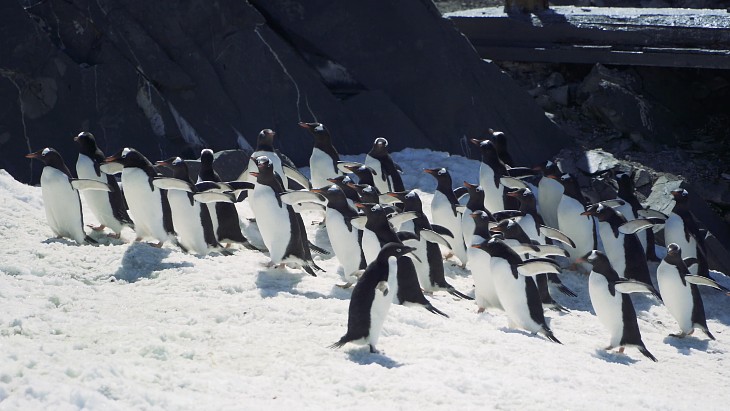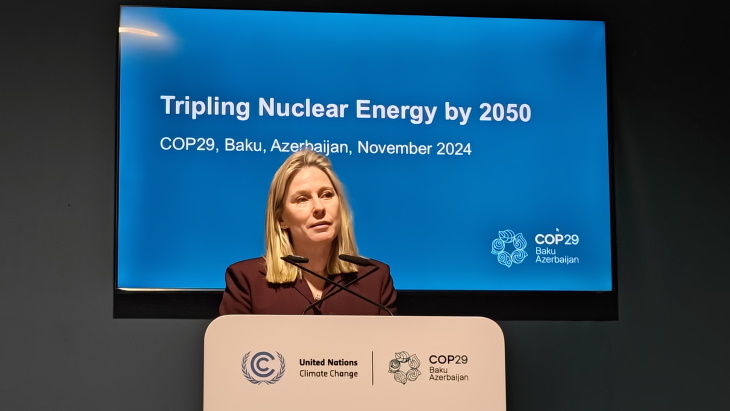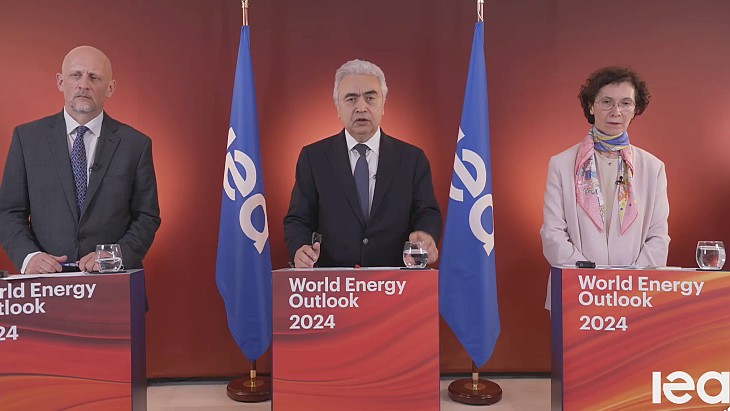Nuclear has important role in Asia's energy future, says IEEJ
Nuclear energy can help Asian countries achieve future economic growth, energy security and environmental protection, the Institute of Energy Economics, Japan (IEEJ) has said in its latest global energy outlook.
In the reference (business as usual) scenario of its Asia/World Energy Outlook 2016, published on 21 October, the IEEJ sees world primary energy consumption increasing by 38% between 2014 and 2040 to 18,900 billion tonnes of oil equivalent. Fossil fuels, it says, will account for 78% of global primary energy consumption in 2040. Most of this growth will be in Asia, with China, India and the Association of Southeast Asian Nations (ASEAN) region accounting for 55% of the increase.
Energy demand in the ASEAN region is rapidly increasing due to industrialization, improved living standards and access to energy. "Contrary to the world trend, ASEAN will depend on cheap energy sources, such as coal, to meet its tripled electricity demand," according to IEEJ. It added, "It is urgently necessary for ASEAN to deal with its energy security and the global environmental problems."
The 2016 outlook features analyses on three major topics: the impacts of energy supply disruptions, climate change and the role of nuclear energy.
Nuclear energy, the institute says, will play an important role in achieving the "three Es" - economic growth, energy security and environmental protection.
In the reference scenario, global installed nuclear generating capacity will increase from 399 GWe in 2014 to 612 GWe in 2040. Over this period, nuclear electricity generation will increase from 2535 TWh to 4357 TWh but its share of total global electricity generation will remain unchanged at around 11.5%.
In the high nuclear scenario, the IEEJ says, nuclear in effect "becomes the base power source" for many emerging countries, such as Asian and Middle Eastern countries. This scenario assumes nuclear energy "will benefit from lower level costs, and that nuclear technology transfer will be properly made from developed countries of nuclear technology, such as Japan, to emerging countries". Under this scenario, nuclear generating capacity in Asia would increase about seven-fold between 2014 and 2040. This, the IEEJ says, would help achieve the "three Es".
However, in the low nuclear scenario - where no new nuclear power plants are constructed not only in developed countries, but also in emerging countries - the world becomes less dependent on nuclear. Under this scenario, Asia's primary energy self-sufficiency decreases from above 75% currently to below 65% and CO2 emission increase significantly.
IEEJ chief economist and managing director Ken Koyama said, "A sensitivity analysis of these scenarios indicates anew that nuclear energy could greatly contribute to reducing CO2 emissions, improving the energy self-sufficiency rate and saving electricity costs ... The outlook emphasizes that more serious efforts to secure safety are required to allow nuclear energy to play its expected important role."
The IEEJ notes, "The development of nuclear in the future is significantly uncertain. It is not only due to countries or regions' circumstances of energy, economy, and development level of social infrastructure, but also a matter of international relations."
In a special Asia Edition of its World Nuclear Performance Report, launched in Singapore earlier this week, the World Nuclear Association notes that at the end of 2015 there were 66 new nuclear power reactors under construction around the world. Of these, 43 of are being built in Asia, with 24 under construction in mainland China alone.
The World Nuclear Association has developed its own vision for the future of electricity, referred to as Harmony. This is based on the International Energy Agency's 2-degree scenario which aims to avoid the most damaging consequences of climate change and requires a large increase in nuclear energy. Harmony envisages a diverse mix of low-carbon generating technologies deployed in such a manner that the benefits of each are maximised while the negative impacts are minimised. The Association's target for nuclear energy is to provide 25% of electricity in 2050, requiring roughly 1000 GWe of new nuclear capacity to be constructed.
Researched and written
by World Nuclear News

_99697.jpg)








_50521.jpg)

